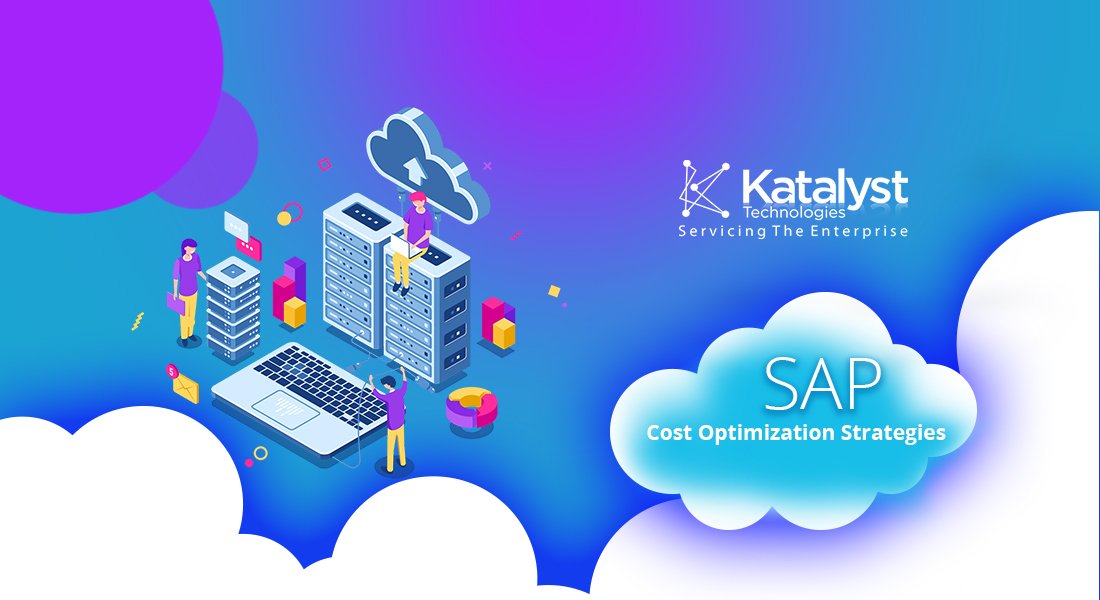
The current disruptions caused by COVID-19 have led to a severe impact on entire industry segments. The pandemic has forced companies to drive digital transformation faster than anticipated while needing to adjust cost optimization strategies to account for uncertain revenue projections.
SAP is the core system for many organizations supporting critical end-to-end business processes. Many SAP customers have invested in their digital journey to SAP S/4 HANA, but a significant percentage of customers are still on SAP ECC. CIOs are faced with the challenge of driving change and innovation while reducing “RUN” costs. According to a recent survey, over 40% of organizations are looking to reduce their IT costs given the current uncertainty.
There are three key areas that SAP customers can look towards to reduce their SAP costs significantly.
- Leverage Hyperscalers
- Hyper Automation
- Next-Generation Application Support and Maintenance
Hyperscalers
Hyperscalers such as Amazon, Google, Microsoft, and others have significantly driven cloud service growth. Shifting SAP workloads to hyperscalers provides an opportunity to optimize the architecture and take advantage of the cloud cost optimization strategies. Additionally, SAP customers can stand-up SAP instances in hours – on-premise or traditionally hosted infrastructure cannot replicate the speed and flexibility provided by hyperscalers.
SAP recently partnered with Microsoft through its project “Embrace” to simplify and modernize customers’ journeys to the cloud. SAP will lead with Microsoft Azure to move on-premise SAP ERP and SAP S/4HANA customers to the cloud through industry-specific best practices, referencing architectures, and cloud-delivered services. This partnership will help mitigate the risk that some SAP customers are challenged with.
Hyper Automation
SAP customers have leveraged traditional automation for over a decade. Hyper Automation is the next evolution with the addition of “intelligence” – AI/ML capability.
This enables smarter execution of tasks, drastically decreasing task execution time, and allowing the capability to perform tasks that were not possible using traditional automation.
Hyper-automation is now achievable by combining various technologies such as robot-based process automation (RPA), Artificial Intelligence (AI), and Machine Learning (ML). For example, Intelligent chatbots with natural language processing (NLP) and AI/ML, combined with RPA, are increasingly being used for SAP support. For end users, simple tickets like system access and password resets can be completely automated while still following required security protocols. Customer service is another use case where intelligent Chatbots are increasingly being used.
Next-Generation Application Support and Maintenance (AMS)
Traditional SAP outsourcing focuses on resolving tickets and traditional ticket reduction activities like Root Cause Analysis (RCA). Next-generation AMS focuses on ticket prevention.
It is likely that many of your current processes were defined decades earlier during the original SAP implementation. What was once the “Best Practice” could now be a pain point. Business growth and complexity can render your processes inefficient over time.
Customization and enhancements that were once required can be the leading cause of bottlenecks and issues today. This applies for master data as well. Master data results in a significant percentage of tickets for SAP customers. Master data design and maintenance strategy is critically important for a smoothly running SAP system
Next-generation AMS focuses on identifying and remediating inconsistent processes and incorrect master data – identifying rationalization opportunities, redundant configuration, and custom coding.
Reach out to the experts at Katalyst Software Services Limited for more insight on how you can optimize your spending on SAP maintenance and support.

